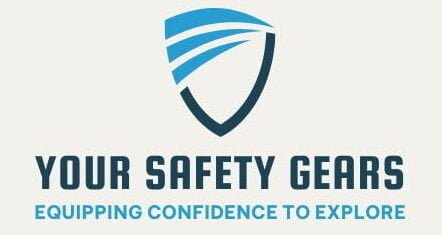Introduction:
Ensuring the safety of our children remains a top priority, but the realm of child safety is undergoing rapid evolution. From technological innovations to societal shifts, numerous significant changes are reshaping child safety practices in today’s world.

1. Smart Home Security:
The integration of smart devices enables parents to monitor their homes remotely using cameras, sensors, and smart locks. These systems provide real-time alerts for unusual activity, ensuring parents can respond promptly to any potential threats or emergencies, thus enhancing overall child safety.
2. GPS Tracking:
Wearable GPS devices and mobile apps allow parents to track their children’s whereabouts in real-time, providing peace of mind, especially in crowded or unfamiliar environments. These technologies offer geofencing features, alerting parents when children venture beyond predefined boundaries, further bolstering child safety.
3. Improved Car Seat Technology:
Advanced car seat designs incorporate features such as impact-absorbing materials, adjustable harness systems, and side-impact protection, providing enhanced safety for children during car travel. Furthermore, stringent regulations ensure that car seats undergo rigorous testing to meet safety standards, offering parents assurance of their effectiveness in protecting their children.
4. Online Safety Tools:
Parental control apps empower parents to manage and monitor their children’s online activities, including website access, app usage, and screen time limits. Additionally, comprehensive internet safety guidelines educate both parents and children about online threats, privacy protection, and responsible digital behavior, fostering a safer online environment for children.
5. Bullying Prevention Programs:
Schools and communities implement comprehensive bullying prevention programs that emphasize empathy, conflict resolution, and positive social interactions. These initiatives aim to create a supportive and inclusive school environment where children feel safe and respected, reducing the prevalence of bullying and its adverse effects on child well-being.
6. Childproofing Innovations:
Innovative childproofing products range from cabinet locks and outlet covers to furniture anchors and stair gates, effectively mitigating potential hazards in homes. These products undergo rigorous testing to ensure their efficacy in preventing accidents and injuries, providing parents with peace of mind as they create a safe environment for their children to explore and play.
7. Stranger Danger Awareness:
Modern stranger danger education emphasizes critical thinking skills, assertiveness, and boundary-setting, empowering children to navigate social interactions safely. Additionally, parents and caregivers are encouraged to maintain open communication with children, establish safety plans, and teach them how to recognize and respond to potential threats in various contexts.
8. Mental Health Support:
Increased awareness and access to mental health resources ensure that children receive timely support for emotional challenges such as anxiety, depression, and trauma. Schools, healthcare providers, and community organizations offer counseling services, support groups, and educational programs to promote mental wellness and resilience among children, addressing the multifaceted aspects of child safety.
9. Sexual Abuse Prevention Education:
Comprehensive sexual abuse prevention education teaches children about body autonomy, boundaries, and safe versus unsafe touch. Furthermore, adults receive training on recognizing signs of abuse, reporting protocols, and creating safe environments where children feel comfortable disclosing abuse, thus fostering a culture of accountability and protection.
10. Emergency Response Training:
Children and caregivers undergo emergency response training that includes fire drills, evacuation procedures, and first aid techniques. Additionally, schools and communities implement emergency communication systems and protocols to ensure swift responses to crises, minimizing potential harm and facilitating effective coordination among stakeholders.
11. Distracted Driving Campaigns:
Awareness initiatives raise public consciousness about the dangers of distracted driving, emphasizing the importance of undivided attention behind the wheel, particularly when transporting children. These campaigns educate drivers on the risks associated with distractions such as texting, eating, and adjusting electronic devices, promoting safer driving behaviors and protecting children from avoidable accidents.
12. Safer Playground Designs:
Modern playgrounds incorporate safety features such as impact-absorbing surfaces, age-appropriate equipment, and fencing to create secure play environments for children. Additionally, designers consider factors like accessibility, visibility, and adequate supervision areas to minimize injury risks and enhance overall playground safety, ensuring children can play freely while remaining protected.
13. Food Allergy Awareness:
Schools, restaurants, and public venues implement food allergy awareness programs and accommodate children with allergies by providing allergen-free menu options, designated eating areas, and staff training on allergy management. Furthermore, parents and caregivers educate children about their allergies, empowering them to advocate for their dietary needs and navigate social situations safely, thereby preventing allergic reactions and promoting inclusivity.
14. Social Media Monitoring Tools:
Parents utilize social media monitoring tools to track their children’s online interactions, detect potential risks such as cyberbullying or inappropriate content, and intervene when necessary. These tools offer features like keyword alerts, activity reports, and content filtering, enabling parents to safeguard their children’s digital well-being and foster responsible online behavior in a rapidly evolving digital landscape.
15. Cybersecurity Education:
Educational initiatives teach children about cybersecurity practices such as creating strong passwords, recognizing phishing attempts, and protecting personal information online. Additionally, schools integrate cybersecurity into their curricula, offering courses on digital literacy, ethical hacking, and internet safety to equip students with essential skills for navigating the digital world securely and responsibly.
16. Enhanced Medical ID Systems:
Medical ID systems leverage wearable technology, electronic health records, and biometric authentication to provide accurate and accessible medical information for children in emergencies. These systems enable healthcare providers to quickly access vital health data, allergies, and emergency contacts, facilitating prompt and effective medical interventions, especially when children are unable to communicate their medical history.
17. Improved Fire Safety Protocols:
Educational campaigns promote fire safety practices such as fire escape planning, smoke alarm maintenance, and fire extinguisher use, empowering children and families to prevent and respond to residential fires effectively. Additionally, advancements in fire detection technology, building codes, and fire-resistant materials enhance fire safety standards, minimizing fire-related injuries and fatalities among children.
18. Stricter Car Safety Regulations:
Government agencies enact and enforce stringent regulations on vehicle safety standards, including occupant protection measures, crashworthiness requirements, and child restraint systems. These regulations drive continuous advancements in automotive engineering and technology, resulting in safer vehicles and reduced injury risks for children in motor vehicle accidents, thus contributing to overall child safety on the roads.
19. Expanded Child Advocacy Programs:
Nonprofit organizations and advocacy groups advocate for children’s rights, lobby for policy changes, and provide support services for at-risk children and families. These programs address issues such as child abuse, neglect, poverty, and discrimination, working collaboratively with government agencies, community stakeholders, and the public to create positive systemic changes that promote child safety and well-being.
20. Home Safety Inspections:
Professional home safety inspections assess potential hazards such as faulty wiring, trip hazards, and inadequate safety barriers, helping families identify and address risks that may compromise child safety. Certified inspectors provide recommendations and resources for improving home safety, empowering parents to create secure living environments conducive to children’s health and well-being.
21. Healthier School Lunch Initiatives:
Schools implement nutrition standards, farm-to-school programs, and meal planning strategies to offer healthier and more nutritious meals to students, promoting optimal physical and cognitive development. Additionally, educational initiatives teach children about healthy eating habits, portion control, and the importance of balanced nutrition, fostering lifelong habits that support overall well-being and academic success.
22. Community Policing Programs:
Law enforcement agencies engage with communities through community policing programs, neighborhood watch groups, and youth outreach initiatives, building trust, promoting positive relationships, and enhancing public safety, particularly for children and adolescents. These programs prioritize proactive crime prevention, conflict resolution, and collaborative problem-solving, creating safer environments where children can thrive and grow.
23. Improved First Aid Training:
Parents, caregivers, and educators receive comprehensive first aid training that covers essential skills such as CPR, wound care, and choking relief, enabling them to respond effectively to medical emergencies involving children. Additionally, training programs emphasize situational awareness, communication techniques, and coordination with emergency services, equipping individuals with the confidence and competence to provide timely and appropriate assistance in critical situations.
24. Expanded Accessibility Measures:
Communities invest in infrastructure improvements, adaptive equipment, and inclusive design practices to ensure accessibility for children with disabilities in public spaces, schools, and recreational facilities. These measures promote social inclusion, equal opportunities, and positive experiences for children of all abilities, fostering environments where diversity is celebrated, and every child feels valued and respected.
25. Legal Reforms:
Legislative reforms strengthen child protection laws, enhance penalties for child abuse and exploitation, and improve access to justice and support services for child victims and survivors. Additionally, policymakers prioritize funding for child welfare agencies, foster care programs, and family support services, recognizing the critical importance of legal frameworks and systemic interventions in safeguarding children’s rights and well-being.

Conclusion:
Child safety is a dynamic field shaped by technological advancements, societal changes, and a collective commitment to protect our most vulnerable members. Staying informed and vigilant is crucial as we continue to prioritize the safety and well-being of our children in an ever-changing world.



